Related Research Articles
Visual Basic for Applications (VBA) is an implementation of Microsoft's event-driven programming language Visual Basic 6.0 built into most desktop Microsoft Office applications. Although based on pre-.NET Visual Basic, which is no longer supported or updated by Microsoft, the VBA implementation in Office continues to be updated to support new Office features. VBA is used for professional and end-user development due to its perceived ease-of-use, Office's vast installed userbase, and extensive legacy in business.
The Telephony Application Programming Interface (TAPI) is a Microsoft Windows API, which provides computer telephony integration and enables PCs running Microsoft Windows to use telephone services. Different versions of TAPI are available on different versions of Windows. TAPI allows applications to control telephony functions between a computer and telephone network for data, fax, and voice calls. It includes basic functions, such as dialing, answering, and hanging up a call. It also supports supplementary functions, such as hold, transfer, conference, and call park found in PBX, ISDN, and other telephone systems.
In computing, cross-platform software is computer software that is designed to work in several computing platforms. Some cross-platform software requires a separate build for each platform, but some can be directly run on any platform without special preparation, being written in an interpreted language or compiled to portable bytecode for which the interpreters or run-time packages are common or standard components of all supported platforms.

Data acquisition is the process of sampling signals that measure real-world physical conditions and converting the resulting samples into digital numeric values that can be manipulated by a computer. Data acquisition systems, abbreviated by the acronyms DAS,DAQ, or DAU, typically convert analog waveforms into digital values for processing. The components of data acquisition systems include:

Lego Mindstorms is a discontinued hardware and software structure which develops programmable robots based on Lego building blocks. Each version includes an intelligent brick, a set of modular sensors and motors, and parts from the Lego Technic line to create the mechanical systems. The system is controlled by the intelligent brick, which act as the brain of the mechanical system.

In software design, the look and feel of a graphical user interface comprises aspects of its design, including elements such as colors, shapes, layout, and typefaces, as well as the behavior of dynamic elements such as buttons, boxes, and menus. The term can also refer to aspects of a non-graphical user interface, as well as to aspects of an API – mostly to parts of an API that are not related to its functional properties. The term is used in reference to both software and websites.
Computer accessibility refers to the accessibility of a computer system to all people, regardless of disability type or severity of impairment. The term accessibility is most often used in reference to specialized hardware or software, or a combination of both, designed to enable the use of a computer by a person with a disability or impairment. Computer accessibility often has direct positive effects on people with disabilities.
Hardware abstractions are sets of routines in software that provide programs with access to hardware resources through programming interfaces. The programming interface allows all devices in a particular class C of hardware devices to be accessed through identical interfaces even though C may contain different subclasses of devices that each provide a different hardware interface.

The Standard Widget Toolkit (SWT) is a graphical widget toolkit for use with the Java platform. It was originally developed by Stephen Northover at IBM and is now maintained by the Eclipse Foundation in tandem with the Eclipse IDE. It is an alternative to the Abstract Window Toolkit (AWT) and Swing Java graphical user interface (GUI) toolkits provided by Sun Microsystems as part of the Java Platform, Standard Edition (J2SE).
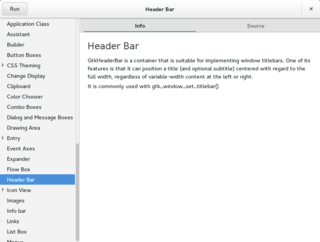
A graphical widget in a graphical user interface is an element of interaction, such as a button or a scroll bar. Controls are software components that a computer user interacts with through direct manipulation to read or edit information about an application. User interface libraries such as Windows Presentation Foundation, Qt, GTK, and Cocoa, contain a collection of controls and the logic to render these.
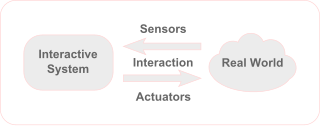
Physical computing involves interactive systems that can sense and respond to the world around them. While this definition is broad enough to encompass systems such as smart automotive traffic control systems or factory automation processes, it is not commonly used to describe them. In a broader sense, physical computing is a creative framework for understanding human beings' relationship to the digital world. In practical use, the term most often describes handmade art, design or DIY hobby projects that use sensors and microcontrollers to translate analog input to a software system, and/or control electro-mechanical devices such as motors, servos, lighting or other hardware.
In Microsoft Windows applications programming, OLE Automation is an inter-process communication mechanism created by Microsoft. It is based on a subset of Component Object Model (COM) that was intended for use by scripting languages – originally Visual Basic – but now is used by several languages on Windows. All automation objects are required to implement the IDispatch interface. It provides an infrastructure whereby applications called automation controllers can access and manipulate shared automation objects that are exported by other applications. It supersedes Dynamic Data Exchange (DDE), an older mechanism for applications to control one another. As with DDE, in OLE Automation the automation controller is the "client" and the application exporting the automation objects is the "server".
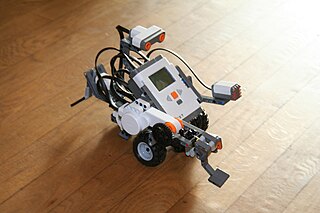
Lego Mindstorms NXT is a programmable robotics kit released by Lego on August 2, 2006. It replaced the first-generation Lego Mindstorms kit, which was called the Robotics Invention System. The base kit ships in two versions: the Retail Version and the Education Base Set. It comes with the NXT-G programming software, or optionally LabVIEW for Lego Mindstorms. A variety of unofficial languages exist, such as NXC, NBC, leJOS NXJ, and RobotC. The second generation of the set, the Lego Mindstorms NXT 2.0, was released on August 1, 2009, featuring a color sensor and other upgraded capabilities. The third generation, the EV3, was released in September 2013.

The Player Project creates free and open-source software for research into robotics and sensor systems. Its components include the Player network server and the Stage platform robotics simulators. Although accurate statistics are hard to obtain, Player is one of the most popular open-source robot interfaces in research and post-secondary education. Most of the major intelligent robotics journals and conferences regularly publish papers featuring real and simulated robot experiments using Player and Stage.
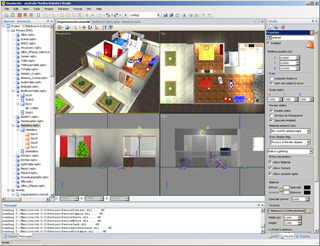
anyKode Marilou is a modeling and simulation environment for mobile robots, humanoids, articulated arms and parallel robots operating in real-world conditions that respect the laws of physics. This robotics suite is used in research centers and industry for various projects like humanoid architectures, wheeled and multi legged vehicles, and multi-robot systems (Multi-agents).
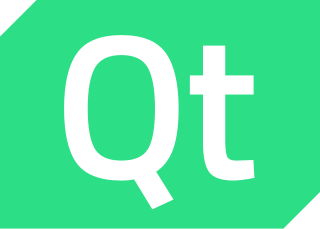
Qt Creator is a cross-platform C++, JavaScript and QML integrated development environment (IDE) which simplifies GUI application development. It is part of the SDK for the Qt GUI application development framework and uses the Qt API, which encapsulates host OS GUI function calls. It includes a visual debugger and an integrated WYSIWYG GUI layout and forms designer. The editor has features such as syntax highlighting and autocompletion. Qt Creator uses the C++ compiler from the GNU Compiler Collection on Linux. On Windows it can use MinGW or MSVC with the default install and can also use Microsoft Console Debugger when compiled from source code. Clang is also supported.

An application programming interface (API) is a way for two or more computer programs to communicate with each other. It is a type of software interface, offering a service to other pieces of software. A document or standard that describes how to build or use such a connection or interface is called an API specification. A computer system that meets this standard is said to implement or expose an API. The term API may refer either to the specification or to the implementation.
Windows Runtime (WinRT) is a platform-agnostic component and application architecture first introduced in Windows 8 and Windows Server 2012 in 2012. It is implemented in C++ and officially supports development in C++, Rust/WinRT, Python/WinRT, JavaScript-TypeScript, and the managed code languages C# and Visual Basic .NET (VB.NET).

The Micro Bit is an open source hardware ARM-based embedded system designed by the BBC for use in computer education in the United Kingdom. It was first announced on the launch of BBC's Make It Digital campaign on 12 March 2015 with the intent of delivering 1 million devices to pupils in the UK. The final device design and features were unveiled on 6 July 2015 whereas actual delivery of devices, initially planned for September 2015 to schools and October 2015 to general public, began on 10 February 2016.
References
- ↑ "Phidgets - Physical widgets for prototyping physical user interfaces". grouplab.cpsc.ucalgary.ca.
- ↑ "FlowStone | Overview". www.dsprobotics.com.